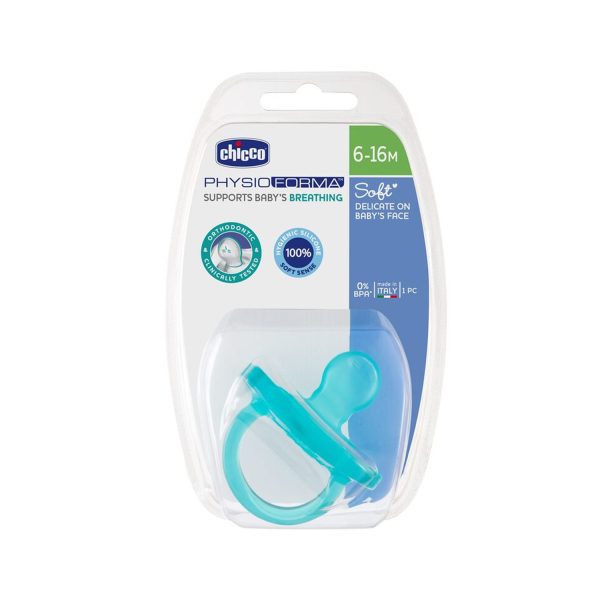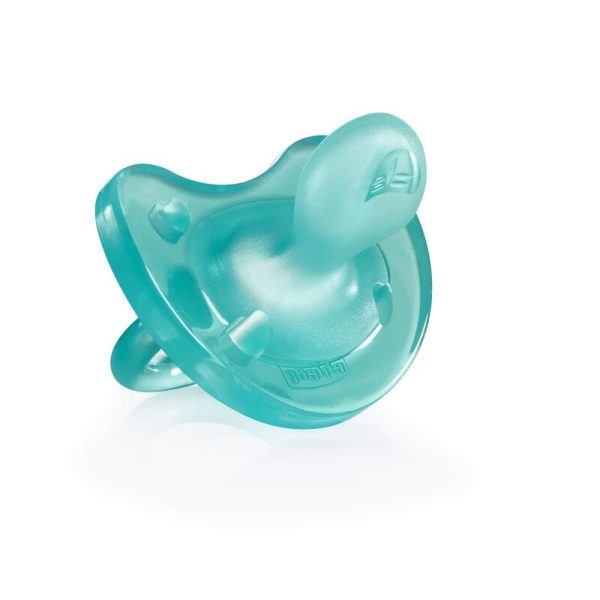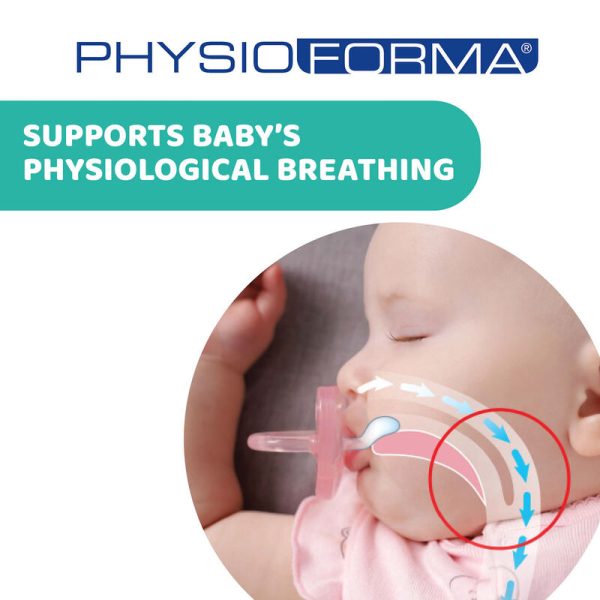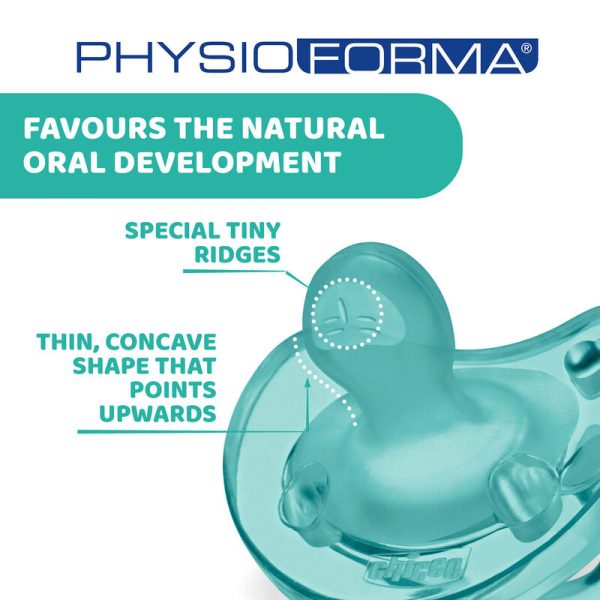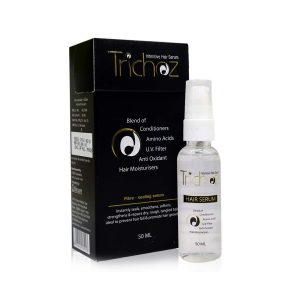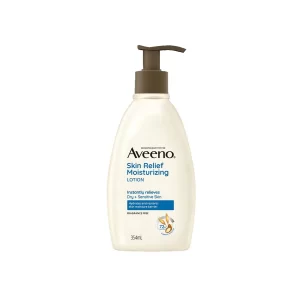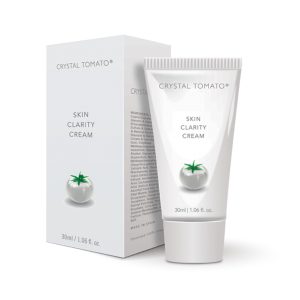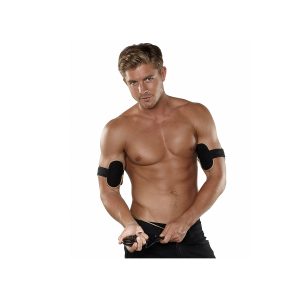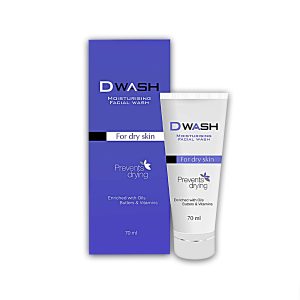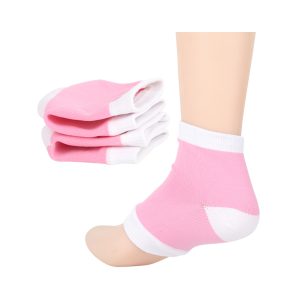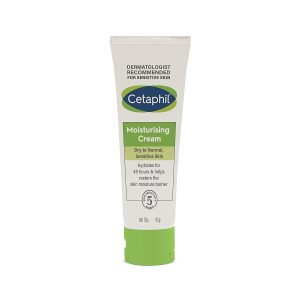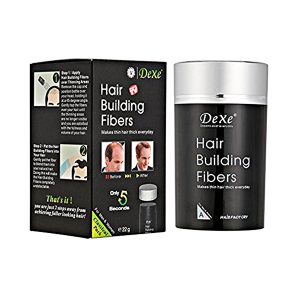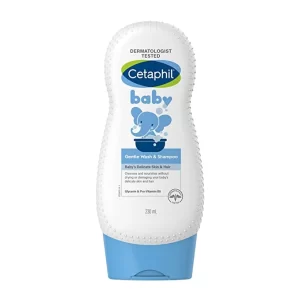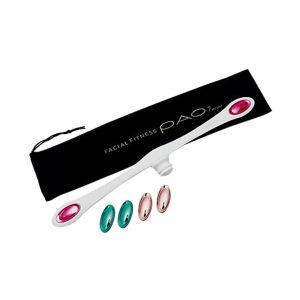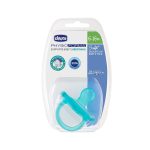
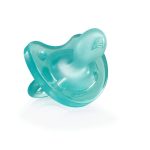
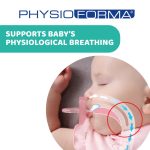
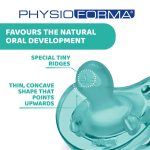
Chicco Soother Physio Air Lumi Silicone: 6-16M
Brand: Visit Chicco Store
Estimated delivery: 6-9 business days
Available Options
Product Highlights
- Contains several anti-irritation holes
- Ensures maximum air circulation
- Avoids saliva stagnation letting the skin free to breathe.
- Ensures the correct space for chin and nose.
- Has rounded edges for a gentle touch on the baby’s skin.
- Sterilizable case
- Orthodontic physio teat
- Made of 0%BPA(Bisphenol A (BPA) is a chemical produced in large quantities for use primarily in the production of polycarbonate plastics.)
Additional offers
 Get an Additional 1% off on this order if you Prepay it. Applicable on a min cart value of ₹599.
Get an Additional 1% off on this order if you Prepay it. Applicable on a min cart value of ₹599.  Get cashback up to Rs. 300 on payments via Mobikwik Wallet.
Get cashback up to Rs. 300 on payments via Mobikwik Wallet. For Celergen capsules and serum, please contact Cureka Support directly to place the orders. Contact Cureka support at care@cureka.com or WhatsApp at +919655928004.
For Celergen capsules and serum, please contact Cureka Support directly to place the orders. Contact Cureka support at care@cureka.com or WhatsApp at +919655928004.COD available from ₹599 till ₹9999
MRP: Offer: 322.00You Save: 77.00 Inclusive of all taxes
- Description
- Additional information
Description
- Chicco Physio Air soother ensures maximum ventilation and freshness for your baby.
- Containing several anti-irritation holes to ensure maximum air circulation and avoid saliva stagnation, letting the skin free to breathe while baby soothes.
- Ergonomically shaped which fit’s baby’s face, ensuring the correct space for chin and nose.
- Rounded edges for a gentle touch on the baby’s skin.
- The standard Chicco Physio teat sits snuggly under baby palette and doesn’t move around mouth.
- Orthodontically approved.
- Fashion plate glows in dark at night so parents don’t need to turn light on to find pacifier.
- Glows in the dark to avoid waking baby at night.
Directions for use:
- Place the pacifier gently on their lower lip or on the front part of their tongue, and wait for the suckling reflex to start.
- If the first introduction is successful, your baby will eventually begin to explore and suckle on the pacifier.
Safety information:
- Until your baby is 6 months old and his or her immune system matures, frequently boil pacifiers or run them through the dishwasher. After age 6 months, simply wash pacifiers with soap and water.
- Never attach a pacifier to a string or strap long enough to get caught around your baby’s neck.
- Replace pacifiers often and use the appropriate size for your baby’s age. Watch for signs of deterioration.
FAQ
This baby pacifier is made from durable, hospital-grade silicone, has a nipple that ensures the natural development of your baby’s teeth and gums.
Soothe a fussy baby.
Offers temporary distraction.
Help your baby fall asleep.
Ease discomfort during flights.
Help reduce the risk of sudden infant death syndrome (SIDS).
A lot of pacifiers on the market are made from food-grade silicone, which is generally considered to be a safe material. Silicone pacifiers are sturdier than latex pacifiers, and last longer.
Pacifier use should be limited to less than 6 hours per day.
Replace the soother every 4-6 weeks for both safety and hygienic reasons. Keep an eye out for any changes in the surface, changes in size and shape, or rupture in the material, and replace the pacifier if you notice any differences.
Paediatricians recommends pacifier use for healthy term babies at nap and bed time, while placing the infant in back-to-sleep position, in order to help prevent SIDS. They also recommend waiting until breastfeeding is well established, usually at about 3-4 weeks of age.
Pacifiers reduce the risk of sudden infant death syndrome (SIDS), especially during the first six months of life. SIDS, also known as crib death, is the sudden and unexplained death of a baby during the first year of life.
Your newborn is 3 to 4 weeks old then can give them a pacifier. Introducing a pacifier any earlier could disrupt breastfeeding.
A case is essential as it keeps the pacifier and holder clean when placed in a purse or diaper bag. If a pacifier holder doesn’t include a case, a plastic or canvas bag will suffice.
Additional information
| Weight | 0.056 kg |
|---|---|
| Dimensions | 42 × 48 × 12 cm |
| Manufacturer Details | Artsana India Private Limited 7Th Floor Paras Twin Tower Gurgaon |
| Packer Details | Wedjat Health Solutions Pvt. Ltd. P.NO. 547 F1-F2 Pinnacle Apartment Arul Nagar East Tambaram Chennai Tamil Nadu 600059 Mail: info@cureka.com Telephone no: 9655928004 |
| Components | Soother |
| Country of Origin | India |
| Expires on or After | 25-09-2024 |
| SKU | Wel/Chi/04003 |




